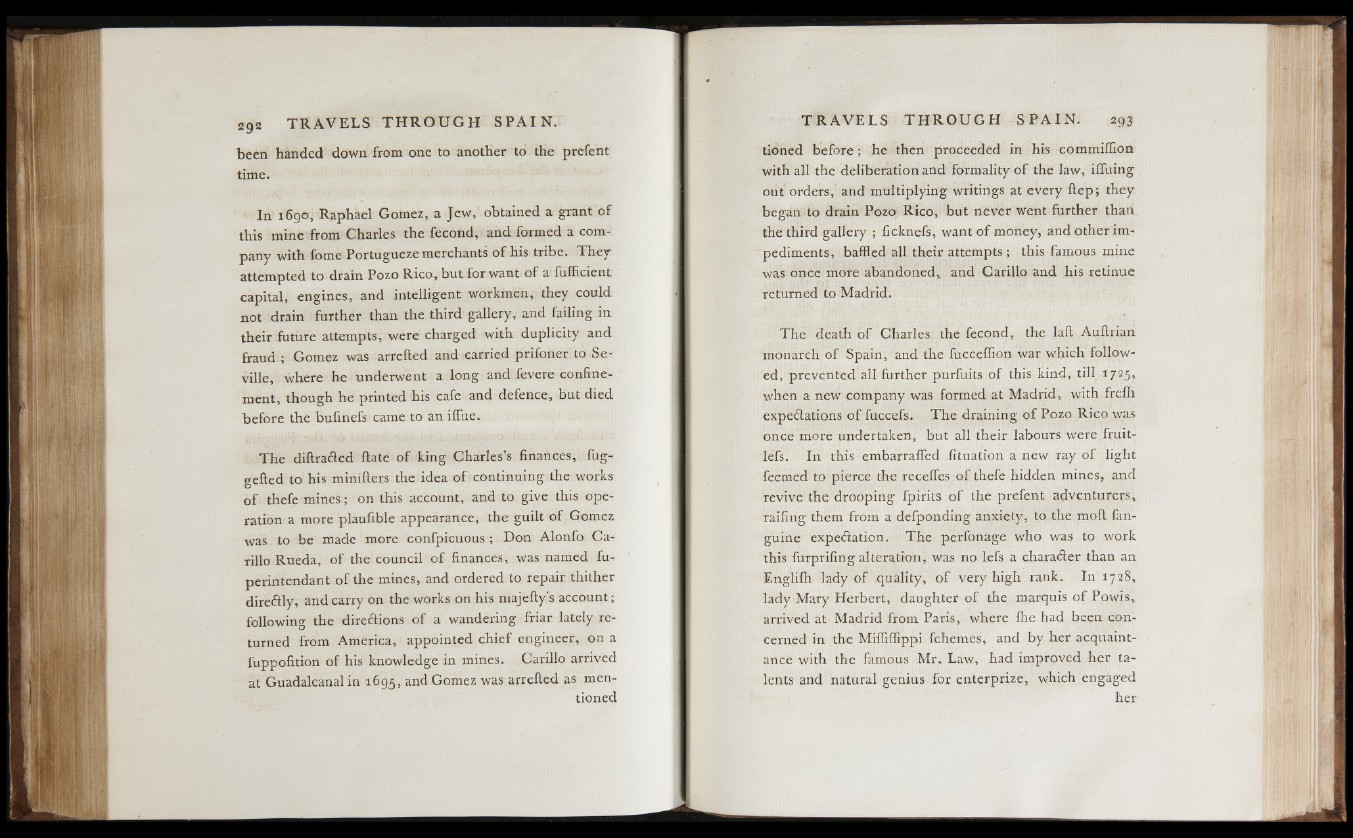
been handed down from one to another to the prefent
time.
In 1690, Raphael Gomez, a Jew, obtained a grant of
this mine from Charles the fecond, and formed a company
with fome Portugueze merchants of his tribe. They
attempted to drain Pozo Rico, but for want of a fufficient
capital, engines, and intelligent workmen, they could
not drain further than the third gallery, and failing in
their future attempts, were charged with duplicity and
fraud ; Gomez was arrefted and carried prifoner to Seville,
where he underwent a long and fevere confinement,
though he printed his cafe and defence, but died
before the bufinefs came to an iffue.
The diftraCted ftate o f king Charles’s finances, fug-
gefted to his minifters the idea of continuing the works
of thefe mines ; on this account, and to give this operation
a more plaufible appearance, the guilt of Gomez
was to be made more confpicuous ; Don Alonfo Ca-
rillo Rueda, of the council of finances, was named fu-
perintendant of the mines, and ordered to repair thither
direCtly, and carry on the works on his majeity’s account •
following the directions of a wandering friar lately returned
from America, appointed chief engineer, on a
fuppofition of his knowledge in mines. Carillo arrived
at Guadalcanal in 1695, and Gomez was arrefted as mentioned
tioned before; he then proceeded in his commiflion
with all the deliberation and formality o f the law, iffuing
out orders, and multiplying writings at every ftep; they
began to drain Pozo Rico, but never went further than
the third gallery ; ficknefs, want of money, and other impediments,
baffled all their attempts; this famous mine
was once more abandoned, and Carillo and his retinue
returned to Madrid.
The death o f Charles the fecond, the Iaft Auftrian
monarch of Spain, and the fucceffion war which followed,
prevented all further purfuits of this kind, till 1725»
when a new company was formed at Madrid, with freih
expectations o f fuccefs. The draining of Pozo Rico was
once more undertaken, but all their labours were fruit-
lefs. In this embarrafled fituation a new ray o f light
feemed to pierce the receffes .of thefe hidden mines, and
revive the drooping fpirits o f the prefent adventurers,
railing them from a defponding anxiety, to the moll fan-
guine expectation. The perfonage who was to work
this furpriiing alteration, was no lefs a character than an
Englilh lady of quality, o f very high rank. In 1728,
lady Mary Herbert, daughter of the marquis of Powis,,
arrived at Madrid from Paris, where the had been concerned
in the Miffiffippi fehemes, and by her acquaintance
with the famous Mr. Law, had improved her talents
and natural genius for enterprize, which engaged
her